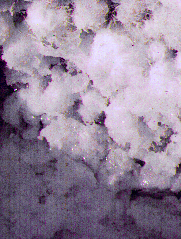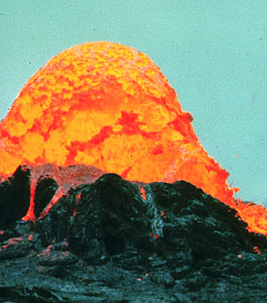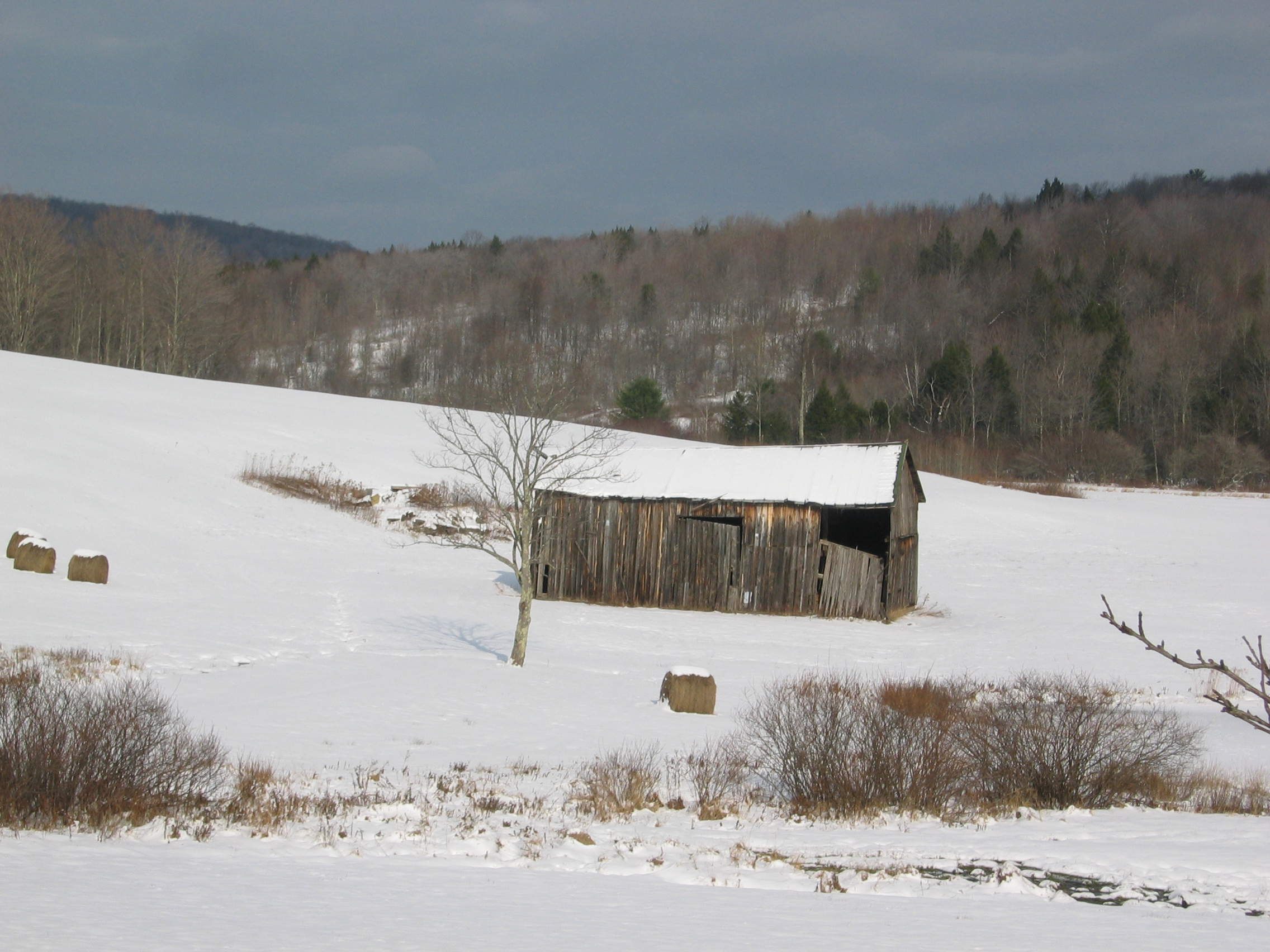 | "So Lulu, how do rocks form?!" |
|
 | "We have to go back to the definition, Lou, to see what the question really means!" |
|
 | "OK, we said that rocks are mixtures of minerals and other things that have become attached to each other naturally!! The 'other things' can be objects such as shells, bones, volcanic glass, or smaller rocks, blah, blah!!" |
|
 | "So we really have two questions, Lou!"
- How do the minerals and other stuff form?
- How do they get attached to each other?
|
|
 | "Let's take them one at a time!" |
|
 | "Well, we've already said something about how minerals form when we visited Crystal City !
|
|
 | "Yeh, I remember! Atoms roaming around, linking up with each other, forming mineral grains that grow! And where did we say that happens?!?" |
|
 | "Lots of places! In evaporating salt water; in lava flows; in heated, solid rock; and even in the air - like when it snows! (Yes, snow and ice are minerals!) Look at the pictures, Lou!!"
|
|
| EXAMPLES OF PLACES WHERE MINERALS GROW |

Salt crystals precipitated
from evaporating salt water (brine) in Death Valley | 
As molten rock (orange) erupting from a volcano cools, it turns into a solid (dark) composed of glass and/or mineral grains.
Photo: D.A. Swanson, USGS
Hawaiian Volcano Observatory | 
Grains that formed
within solid rock subjected to
high pressure and temperature | 
Snow in the Catskills | |
 | "I understand how atoms can move about and link up in watery solutions (like at Death Valley in the brine), molten rock (like in Hawaii in the lava), and air (in clouds to form snow), but how can atoms move through solid rock?! And how can they find the space to form grains there?!" |
|
 | "Good questions, Lou! Well, remember that atoms are very small, and even solid rock has lots of openings on a microscopic and submicroscopic scale! To atoms, a rock is criss-crossed by great highways along which they can travel!!" |
|
 | "But unless there are actual large holes in the rock, where is there space for mineral grains (that maybe are up to an inch or more across) to grow?!" |
|
 | "Simple, Lou! Either the atoms that are already there re-arrange themselves to form new grains, or else as atoms enter the region, other atoms leave and go elsewhere!!" |
|
 | " You have an answer for everything, Lulu!! OK! We see how minerals form! As for bones and shells, they form from animals! And volcanic glass - hey, it forms from volcanoes - duh! So that sorta takes care of the first question, 'How do the minerals and other things form?'!! It's the second question - 'how do they become attached?' - that's the heart of our problemo!! Right!??" |
|
"Rights!! As we've said, Lou, rocks form through the attachment to each other of certain natural materials! So what we need to do is look at the two ways of attachment:"- Attachment by Intergrowth
- Attachment by Cementation
|  |
|